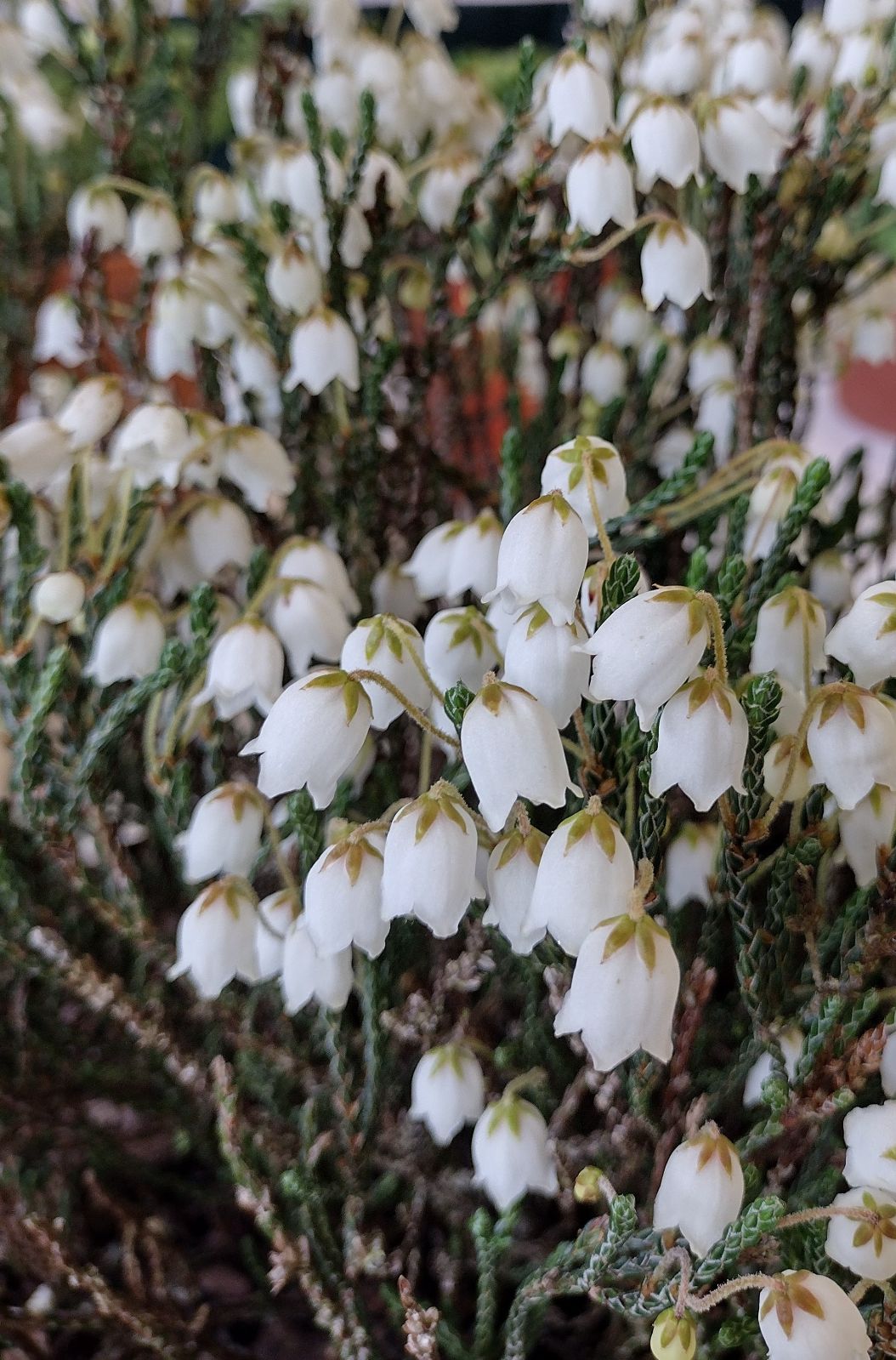Cassiope selaginoides
Credits
Article from Bean's Trees and Shrubs Hardy in the British Isles
Recommended citation
'Cassiope selaginoides' from the website Trees and Shrubs Online (treesandshrubsonline.
Genus
A dwarf evergreen shrub of tufted habit from 2 to 10 in. high. As in the other cassiopes, the stem is almost or quite hidden and the twig is made four-sided by the stalkless overlapping leaves tightly pressed to it. Leaves 1⁄12 to 1⁄8 in. long, of lanceolate shape, deeply grooved at the back, downy in the groove and on the margins. Flowers solitary on slender, hairy stalks 1⁄2 to 1 in. long, sometimes much shorter. Corolla nodding, pure glistening white, bell-shaped, 1⁄4 to 3⁄8 in. long, five-lobed, the lobes triangular and slightly recurved. Sepals 1⁄8 in. long, pointed, with whitish membranous margins. Stamens shorter than the corolla, the stalks bearded and their anthers having each a bristle standing out at right-angles to the stalk.
Native of the Himalaya and China; originally discovered by the younger (Joseph) Hooker in 1849, in Sikkim, where it grows up to 13,000 ft altitude. Other collectors, including Wilson and Kingdon Ward, have found it in W. China and Tibet. Both these collectors note that it often grows under rhododendron bushes. Lt-Col. Messel flowered a plant at Nymans in 1928 that had been raised from Kingdon Ward’s Tibetan seeds.
C. selaginoides is best adapted for a shady moist place in the rock garden where the soil is of a peaty nature. Its rather mossy flower-stalks are distinctive.
A beautiful and very distinct form of this species is LSE 13284, collected by Ludlow, Sherriff, and Elliott on the Deyang La in S.E. Tibet in 1947. It makes a graceful, diminutive bushlet about 8 in. high, with creamy white flowers, strikingly large for so small a plant and borne on long arching pedicels. It was given an Award of Merit in 1954.
A form is figured in Bot. Mag., t. 9003b, which was only 1 in. high, the corolla ovoid, with small, scarcely recurved lobes. It was raised at Kew from seed received from Darjeeling and named var. nana by Stapf.

